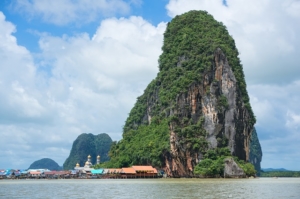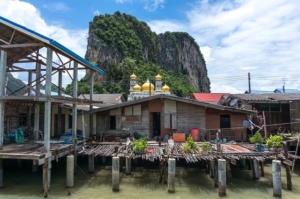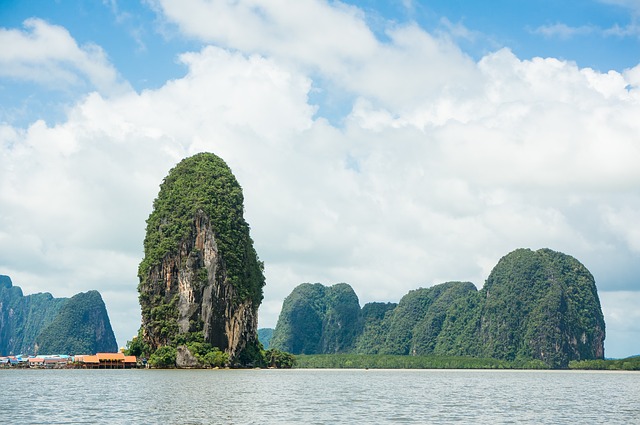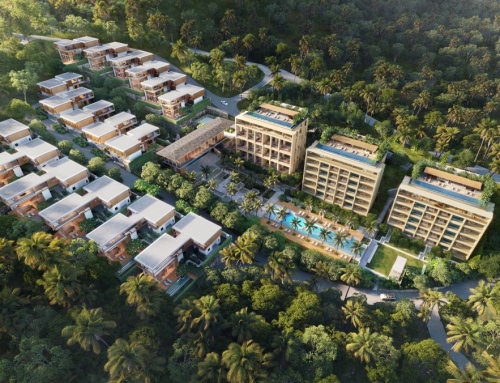Living in Phuket Opens the Door to Incredible Cultural Adventures
Owning property in Phuket isn’t just about beaches and sea views — it’s also about being immersed in one of the most culturally rich regions in Southeast Asia. Just a short boat ride from the island lies Koh Panyee, a centuries-old floating Muslim village in Phang Nga Bay.
For residents and property owners, it’s an unforgettable experience to share with family and visiting guests. These easy escapes into authentic Thai life are part of what makes living in Phuket such a unique and rewarding experience.
What Is the Floating Muslim Village?
Koh Panyee (also spelled Panyi) is a remarkable stilt village that rises out of the sea at the base of a dramatic limestone cliff. The village was founded over 200 years ago by Malay fishermen and today is home to around 1,600 people — nearly all of whom are descendants of the original settlers.
The entire village is built over water, with wooden walkways, floating football fields, local markets, schools, a mosque, and seafood restaurants creating a bustling and resilient community.

What to Expect When You Visit
A visit to Koh Panyee offers:
-
Fresh seafood lunches at floating restaurants
-
Strolling along wooden boardwalks through the village
-
Friendly locals selling crafts, snacks, and souvenirs
-
A glimpse into authentic Thai-Muslim coastal life
-
Visits to the floating football pitch (built by village children!)
Many tours also combine a stop here with James Bond Island or canoeing in nearby caves — making for a well-rounded day out from Phuket.
Why It’s Great for Phuket Property Owners
As a Phuket resident, this kind of cultural immersion is just a boat ride away. Unlike tourists who rush through, you can take your time, explore deeper, and bring friends or family back whenever you like.
Whether you own a home in Ao Po, Yamu, Kathu, or Rawai, it’s a reminder that living in Phuket means effortless access to some of Thailand’s most fascinating locations — without ever needing to hop on a plane.
Browse Phuket villas for sale
Explore: Phuket condos near marinas

How to Get There
Most tours to Koh Panyee depart from:
-
Ao Po Grand Marina
-
Royal Phuket Marina
-
Chalong Pier
You can visit as part of:
-
A Phang Nga Bay tour
-
A James Bond Island combo trip
-
A private long-tail boat hire
It’s less than an hour from most Phuket marinas by boat.
Thinking of Moving to Phuket?
Trips like these are a reminder that Phuket isn’t just a tropical destination — it’s a place where you can live a lifestyle full of discovery, connection, and culture.
Get in Touch | Call Now On: +66 9484 11918





Social Contact